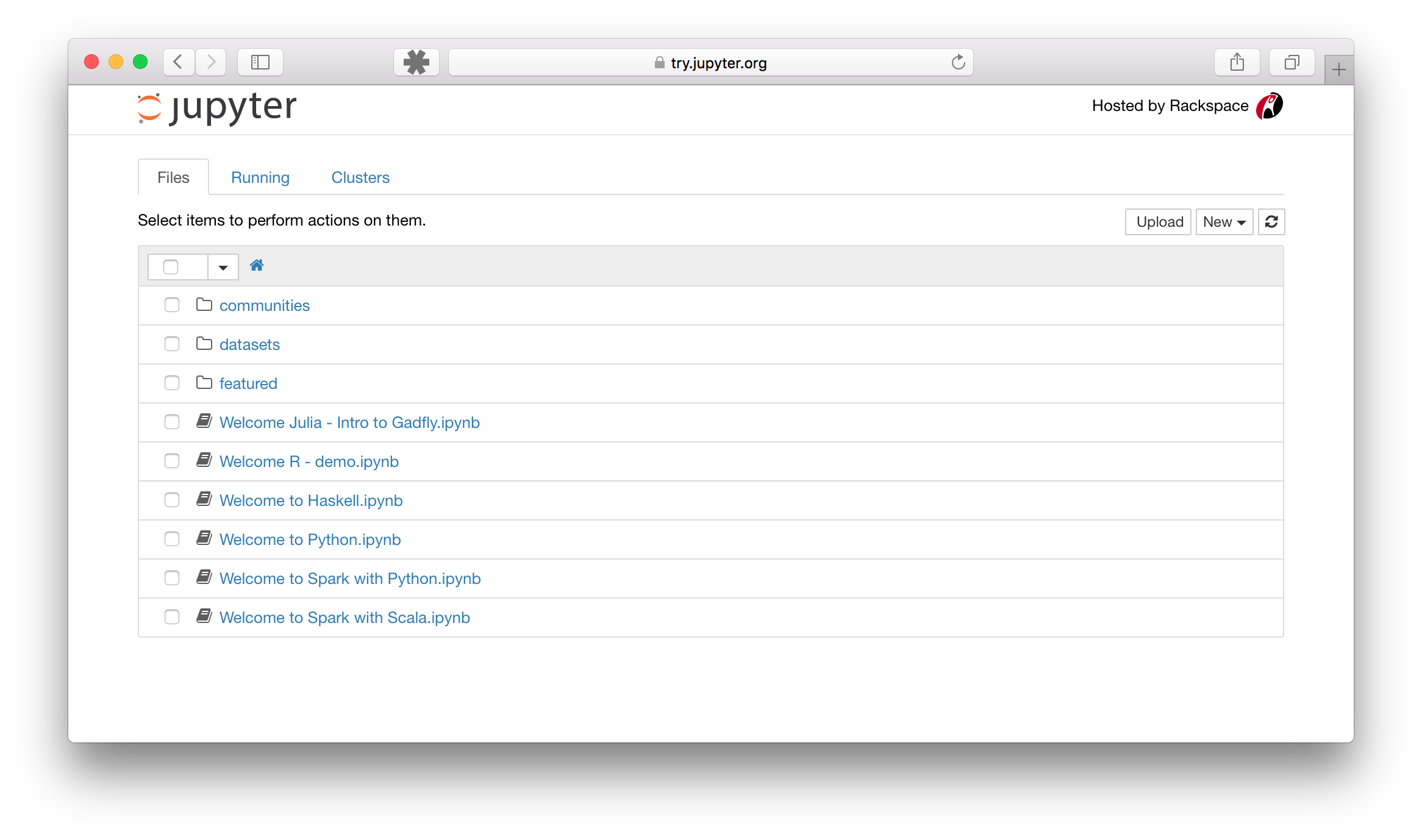Jupyter User Guide
We will use the Jupyter notebook to run our Python data analysis in this course. If you’ve successfully installed and activated the environment for this course, the Jupyter notbook package should already be installed.
On this page, I’ll discuss two common issues when starting out with Jupyter notebooks: launching a notebook and ensuring the right files are available.
I strongly encourage you to go through the official documentation for the Jupyter notebook:
- Introduction
- Starting the notebook server
- Creating a new document
- Opening notebooks
- Notebook user interface
- Structure of a notebook document
- User interface components
Launching a Jupyter notebook
The recommended approach for starting a notebook is to use the Anaconda Prompt
on Windows or the Terminal app on MacOS. To do so, we simply need to activate
our 'musa-550-fall-2020' environment and then launch the notebook.
From the command line, run:
conda activate musa-550-fall-2020
jupyter notebook
This will create the local Jupyter server and should launch the Jupyter dashboard. If it does not open in a browser, copy the link that is output by the command into your favorite browser. Typically, the server will be running at http://localhost:8080. The dashboard should like look this:

Once the server is running, you can create a new notebook and get started!
A new notebook can be created either from the dashboard, or using the File ‣ New menu option from within an active notebook. The new notebook is created within the same directory and will open in a new browser tab.

Source: Jupyter Notebook documentation
The following shows the basic user interfaces of a Jupyter notebook:

For detailed explanations of these components, see the Jupyter notebook documentation on the user interface. There is also a more detailed section on the user interface components.
Changing the Jupyter notebook start-up folder
By default, the Jupyter notebook launches from the home directory. When you see the Notebook dashboard, you should see all of the files in this folder.
When working with weekly lectures or assignments, it is easiest to open notebooks from the specific assignment or week folder that you are working on.
To do so, it will be easiest to change the directory before launching the Jupyter notebook:
Step 1: Change to the desired directory
Let’s imagine we want to change to a folder named:
/Users/YourUserName/MUSA_550 (on a Mac),
or
C:\Users\YourUserName\MUSA_550 (on Windows)
If you need help finding the folder name’s path, this guide for Windows. (I usually use Method #2). On MacOS, you can use this guide to copy a folder’s path name.
Next, use the following steps:
Step 1. On Windows, open the Anaconda Prompt, or on Mac, open the Terminal.
Step 2. Navigate to the folder where the environment file is located. From the Prompt or Terminal run:
Windows
cd C:\Users\YourUserName\MUSA_550
Mac
cd /Users/YourUserName/MUSA_550/
Step 2: Launch the Jupyter notebook
Now, type the following command, either in Anaconda Prompt or the Terminal:
jupyter notebook
And the launched notebook will start from your desired folder!